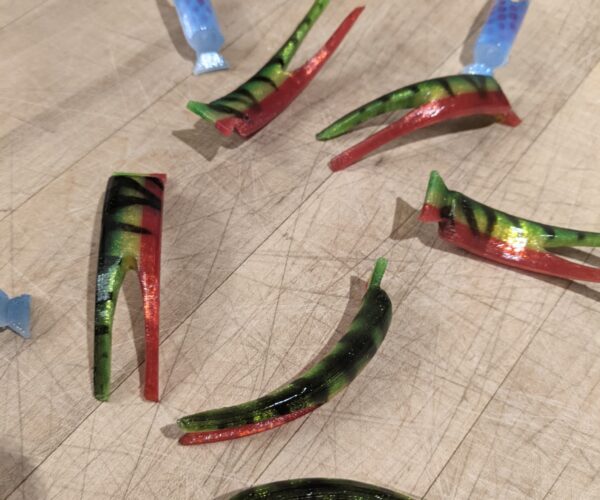Smooth surface without sanding
I think this video might be interesting for many of us.
It seems the idea is also usable for FDM prints (watch whole video). I just wonder if that would work for all filament types. If yes, then having a resin in spray dose would be very handy 😊 .
[Mini+] [MK3S+BEAR]
It's basically: Use thick, goopy, stuff to cover surface artifacts; but it would still be better if he gave it a light sanding first.
Thick enamel paints, many varnishes and epoxies all have the same effect. The only real advantage of his method is the speed of curing but there are plenty of UV cured varnishes and coatings that can be obtained in lower quantities and prices than printing resin.
All of these methods sacrifice dimensional accuracy and lose fine detail but you already knew that...
Cheerio
RE: Smooth surface without sanding
I never had the need to post process (paint) my prints, so I'm really not familiar with all that. I just though this could be interesting in cases when object can't be sanded because of many details. I can imagine similar can be achieved by using proper primer spray -but then, one would need to paint the object afterwards. And again, I don't know if primer spray sticks to all most popular filament types.
[Mini+] [MK3S+BEAR]
Almost any print you will be using outside will need protection from the elements, paint is often the best.
The basic rule is never try to paint detail directly onto an fdm print, it will wick along the filament. So, a preparatory coating, be it something to strengthen/harden the surface or just a primer, is essential for accurate colour work later.
As for which primer to use it's the usual advice: read what it says on the tin.
His method is one that might be of some use if you happened to have everything to hand but I wouldn't suggest buying anything in.
Cheerio,
RE:
I have had good results airbrushing acrylic paint without any primer. No wicking. I print white PLA at .15 layer height.
Mk3S+,SL1S
I've not tried acrylic, I'll bear that in mind, thanks. Mostly I'll use marine paints or regular house paint when ashore, detailed work is usually enamel.
White filaments are usually the trickiest to print, they contain large amounts of white pigment so for objects to be painted I try to use clear or natural colours; alternatively I pick a colour close to the intended paint colour.
Cheerio,
Acrylic and wicking
I get mixed results spraying air-brush acrylics onto un-primed prints. I print small lures and on some of them paint stripes onto them. If I don't clear coat the lures before applying the stripes, my reject rate goes up almost 40% due to wicking (QC rejection). It isn't severe, just some blurring on the edges of the painted details - but when your product is 2 inches long, customers expect crisp, clear and shiny, so I clear-coat the prints with acrylic before using final colors. After applying colors, another clear coat to keep the acrylic (water color) from washing off when the lures hit the water.
